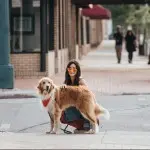7 Employee Handbook Examples You Should Use

Table of contents
- 1.What is an employee handbook?
- 2.What do the best employee handbooks typically include?
- 3.3 considerations to balance when creating your employee handbook
- 4.Why should you create an employee handbook?
- 5.Legal compliance
- 6.Conflict mitigation
- 7.A warm welcome to new employees
- 8.Additionally, the employee handbook:
- 9.What are some great employee handbook examples?
- 10.That said, here are 7 sample employee handbooks worth reviewing:
- 11.Tailor your employee handbook to your business
Overview: Why You Need an Employee Handbook
An employee handbook isn’t just paperwork — it’s a vital tool for aligning teams, setting expectations, and protecting your business. Here’s what to know:
- What it is – A handbook outlines your company’s mission, policies, code of conduct, benefits, and legal rights.
- Why it matters – It improves onboarding, supports legal compliance, prevents miscommunication, and boosts company culture.
- What to include – Cover policies on conduct, PTO, DEI, remote work, COVID-19, and more. Use clear language and digital accessibility.
- Get inspired – Review these 7 standout examples from brands like Netflix, HubSpot, Trello, Zappos, Valve, and Nordstrom.
Your handbook should reflect your company’s values and voice — and TriNet offers a free template to help you get started.
If you haven’t created an employee handbook for your business yet — you’re not alone. An employee handbook can be incredibly useful in communicating essential information to employees and building a positive workplace culture, but it’s not easy to develop one. Getting employees to read the handbook is another battle.
Having an employee handbook isn’t something some employers think about until there’s a pressing need. This is especially true in small businesses that often operate administratively on an as-needed basis.
However, this can easily lead to miscommunication, confusion, and chaos. For this reason, creating an employee handbook should be non-negotiable.
A 1st step is understanding the importance of the employee handbook to business success. It also helps to examine effective employee handbooks developed by other businesses.
Next we cover the fundamentals of employee handbooks, plus offer 7 handbook examples you can learn from.
What is an employee handbook?
An employee handbook is sometimes called an employee field guide or a employee manual. It provides new hires and employees with information about the company, such as its:
- Mission
- Vision
- Values
- Policies
- Procedures
- Working conditions
- Code of conduct/behavioral expectations
For new hires, this information is vital to getting started on their 1st day. After reading the handbook, they should have a solid understanding of the company, including how things are done and what’s expected of them. This helps them approach their work with more confidence and increases their efficiency right off the bat.
For existing employees, the handbook serves as a point of reference they can turn to whenever they need certain workplace information, such as payroll procedures or their employment rights.
New hires should receive the handbook by their 1st day of work. Existing employees should get a copy of the handbook each time it is updated.
What do the best employee handbooks typically include?
Each company is different. Therefore, your employee handbook should address the unique elements of your business and work environment, including company values and objectives.
Typically though, the best employee handbooks usually include the following information:
- Welcome letter and introduction to the company, such as its history, mission, values, and culture
- Equal Employment Opportunity Commission (EEOC) statement
- Workplace policies and procedures, including when it comes to hiring, attendance, payroll, breaks, paid time off, cybersecurity, privacy, and anti-discrimination
- Employees’ rights under relevant employment laws, including regarding wages/salaries, employee benefits, and workplace safety
- Employment relationship between the employer and the employee
- Code of conduct, such as dress code, alcohol/drug policy, ethics policy, and conflict of interest
- Disciplinary actions, including the types of employee behavior that could result in employee discipline
- Realistic expectations, meaning what the company expects to see from its employees and what employees can expect from the company
- Disclaimers, such as a statement that the handbook does not address every employment situation nor does it create a contract for employment
- Acknowledgement of receipt. This is a statement employees should sign acknowledging they received and read the handbook.
3 considerations to balance when creating your employee handbook
1. Leverage Modern Technology and Digital Accessibility: In today's digital age, it is critical to highlight the importance of making your employee handbook accessible online and via mobile devices. In addition to this improving the employee experience, it also makes it easier for HR managers to update and distribute the handbook efficiently. Using technology to create interactive and engaging digital handbooks that include multimedia elements such as videos, infographics, and search functionalities will help keep the content engaging and move business operations to paperless.
2. Include COVID-19 Policies and Remote Work Guidelines: Given the recent global events and the rise of remote work, it's essential to add a section on COVID-19 policies and remote work guidelines to your employee handbook. Covering these topics help employees understand the company's response to the pandemic, safety measures, and remote work expectations.
3. Address Diversity, Equity, and Inclusion (DEI) Initiatives: It is absolutely necessary to dedicate a significant portion of your employee handbook to diversity, equity, and inclusion in order to showcase your company's commitment to fostering an inclusive workplace. In the template, highlight your organization's policies and initiatives related to DEI, including training programs, anti-discrimination policies, and reporting mechanisms. Promoting a diverse and inclusive workplace for not only legal compliance but also for the positive impact it has on employee morale, productivity, and innovation.
Why should you create an employee handbook?
Legal compliance
There is no law requiring you to have an employee handbook. However, many federal and state laws require employers to inform employees of their rights in the workplace. Your staff handbook is one of the best ways to deliver this information to your employees.
Conflict mitigation
The employee handbook outlines the company’s code of conduct, so that employees know which behaviors are acceptable and which ones are not. It also explains the consequences of poor behavior. This can deter employees from engaging in toxic conduct and encourage them to adopt healthy behaviors and attitudes.
A warm welcome to new employees
Employee handbooks can help new employees feel at home in their work environments. Learning about the company’s history, mission, and core values can increase employee engagement and loyalty.
Additionally, the employee handbook:
- Allows you to formalize your employment policies and procedures
- Simplifies the employee onboarding process by providing each new employee with easy access to the information they need
- Helps you develop consistent policies and procedures, keeping all team members on the same page
- Decreases the risk of employee complaints and lawsuits, such as employees claiming you did not tell them about their workplace rights
- Serves as a resource for employees to check dress codes, vacation and sick leave policies, parking recommendations, timekeeping policies, etc.
It’s important to create an employee handbook as soon as you have a mission statement and know what information you’re required to share or want to share with your employees.
What are some great employee handbook examples?
Even if you know what needs to go into your employee handbook, such as company policy, you may still struggle to envision what it’s supposed to look like. This is where examples come in. It’s a lot easier to know how your handbook should look when you have real-world examples to work from.
While they can serve as inspiration, your own employee handbook needs to reflect the characteristics of your company, including personality, norms, and legal requirements.
Keep in mind, though, that examples are just that. While they can serve as inspiration, your own employee handbook needs to reflect the characteristics of your company, including personality, norms, and legal requirements.
That said, here are 7 sample employee handbooks worth reviewing:
- Nordstrom. While they don’t hit every point many companies will want to include, their one-simple-rule approach nails the simplicity message. Start with one simple rule and you can always fill in the rest later. "Our employee handbook is a single card that says 'Use good judgment in all situations,'" a Nordstrom spokesperson told Business Insider.
- Valve. If you’ve been asking around about employee handbooks, it’s likely that someone mentioned Valve’s. It went viral awhile back because of how well it’s executed, touching on everything from company philosophy to walking new hires through their 1st day of work.
- HubSpot. This handbook makes the list because it manages to achieve so much through a traditional PowerPoint format. By sharing it on SlideShare, HubSpot practices the transparency it preaches.
- Netflix. This employee handbook is quite well known in the HR circle because it delineates Netflix’s culture and values, plus makes them actionable.
- Facebook. The handbook for this tech company is so expertly designed that it practically compels you to read it over and over again.
- Trello. This tech company uses their own platform to house their employee handbook, which they call an “employee manual.” The interactive design is user-friendly and highly engaging.
- Zappos. Titled “The Zappos Culture Book,” this handbook highlights the company’s dedication to workplace culture. It includes not only information on the company’s values and mission, but also numerous testimonials from the company’s employees.
To narrow things down, you can search online for employee handbook examples that are specific to your industry or culture.
Tailor your employee handbook to your business
The 7 examples we provided above give some insight into how to create an attractive handbook that employees will want to read. But in the end, it's vital to tailor your employee handbook to your own business requirements.
You will need a firm understanding of your company’s foundation, mission, core values, employment law requirements, and more. For best results, consult with your legal team.
To make things easier for you, TriNet offers free employee handbook template so you can start building your employee handbook today!
This article has been updated.

Cinnamon Janzer
Table of contents
- 1.What is an employee handbook?
- 2.What do the best employee handbooks typically include?
- 3.3 considerations to balance when creating your employee handbook
- 4.Why should you create an employee handbook?
- 5.Legal compliance
- 6.Conflict mitigation
- 7.A warm welcome to new employees
- 8.Additionally, the employee handbook:
- 9.What are some great employee handbook examples?
- 10.That said, here are 7 sample employee handbooks worth reviewing:
- 11.Tailor your employee handbook to your business






